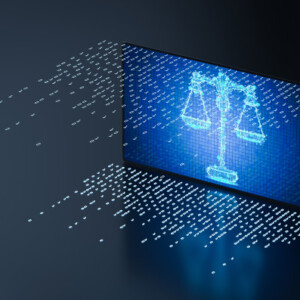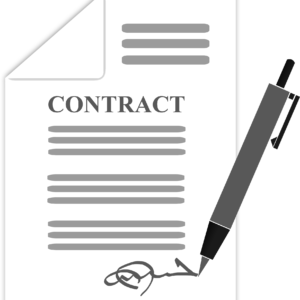Artificial intelligence presents a wealth of opportunities and benefits, but also risks. Today, we will take a closer look at selected legal risks and point out what to give attention to when using AI-based systems.
- Data protection
Let us, for instance, examine the OpenAI Terms of Use. There, OpenAI explicitly indicates that the company can use data entered by users. At the same time, OpenAI does not undertake to protect such data and makes no representations as to maintaining its confidentiality. Additionally, data entered into ChatGPT may be transferred to the US, which – given the absence of a successor of the Privacy Shield – also raises legal issues in the context of the GDPR. The European Data Protection Board (but others too) raises also other concerns about the enforcement of the GDPR by OpenAI.
Thus, entering legally protected data, in particular personal data and confidential data, into an artificial intelligence system and, therefore, into a system about which there is no guarantee of reliability and no guarantee of legal compliance – is a major risk.
- Copyrights
Again, by way of introduction – let me start with the issue of the OpenAI Terms of Use. It should come as no surprise that the company shifts liability for materials – those constituting both service input and output – to the user. Thus, the user is responsible for ensuring that the materials do not violate any rights and is even obliged to ensure that the content does not violate any rights. How can you manage that with – allegedly – trillions of parameters, ChatGPT? That’s where the problem lies.
This raises further questions about artificial intelligence, whether its use of material – a substantial part of which is certainly copyrighted – is legal, and to whom the rights to AI-generated objects belong.
If AI were merely inspired by other people’s materials, it would be within the bounds of the law. However, if for training purposes materials are copied and processed, this is considered another field of exploitation, for which you need at least a license.
Moreover, it may happen that artificial intelligence creates a derivative work (in other words, an elaboration of the original work), in such a case we would require the permission of the creator of the original work to use such an object.
Another issue is who owns the rights to the work (which is not a derivative work) – the AI provider or the prompter, or perhaps no one and such a work is not subject to copyright? We already know that AI cannot be an author under copyright law. It is therefore necessary to find the demarcation line where human creation ends and AI creation begins. Here, it could be helpful to refer to the guidelines of the U.S. Copyright Office provided in its policy on examining and recording works containing AI-generated material. Below are a few quotes:
- When an AI technology receives solely a prompt from a human and produces complex written, visual, or musical works in response, then the work is deemed determined and executed by the technology—not the human user.
- It is key that the users do not exercise ultimate creative control over how such systems interpret prompts and generate material. Instead, these prompts function more like instructions to a commissioned artist – they identify what the prompter wishes to have depicted, but the machine determines how those instructions are implemented in its output.
- In other cases, however, a work containing AI-generated material will also contain sufficient human authorship to support the existence of copyright. For example, a human may select or arrange AI-generated material in a sufficiently creative way that “the resulting work as a whole constitutes an original work of authorship.” Or an artist may modify material originally generated by AI technology to such a degree that the modifications meet the standard for copyright protection.
- In these cases, copyright will only protect the human-authored aspects of the work, which are “independent of ” and do “not affect” the copyright status of the AI-generated material itself.
In short, on the one hand, there are doubts as to the legality of using other people’s materials as training data, on the other hand, there is a high probability that what the artificial intelligence produces will not be protected by copyright or will be – but only partially. Obviously, neither circumstance is beneficial in business terms.
We should bear in mind that copyrights are subject to the so-called absolute protection. This means that as users we will be liable for their violation, even if the supplier assured us of the legality of the materials and activities, and thus we were misled (at most, we can regress the amount of damages, for example, to such a supplier).
- Industrial property rights
It has been also debated for some time whether it is possible to patent a product of AI. Here, the situation will be quite similar to the issue of covering an object created with the use of AI with copyrights since only a human is deemed an inventor. Interestingly, not so long ago the U.S. Patent and Trademark Office requested public comment on, among other things, whether AI should be deemed a co-inventor.
- The AI Act and the Artificial Intelligence Liability Directive
There are, of course, further legal issues on the horizon. Let us mention, for instance, the issue of the entry into force of the EU legislation dedicated to artificial intelligence, namely the regulation of the European Parliament and of the Council on laying down harmonised rules on Artificial Intelligence (the so-called AI Act) and implementation of the AI Liability Directive.
To sum up, it is known that artificial intelligence systems are not always a safe tool to work with, especially given the legal uncertainties involved. So it is worth addressing these issues in your organisation or within your project. It is a good idea to implement a document in the fashion of a security policy, which will be a signpost for associates as to what you have accepted as permitted use of artificial intelligence, or under what conditions. And if you are a contractor using AI to execute orders, be sure to include the appropriate provisions in your contract.
The article was written in co-operation with Foundation for Innovative Poland and Innoshare Network




